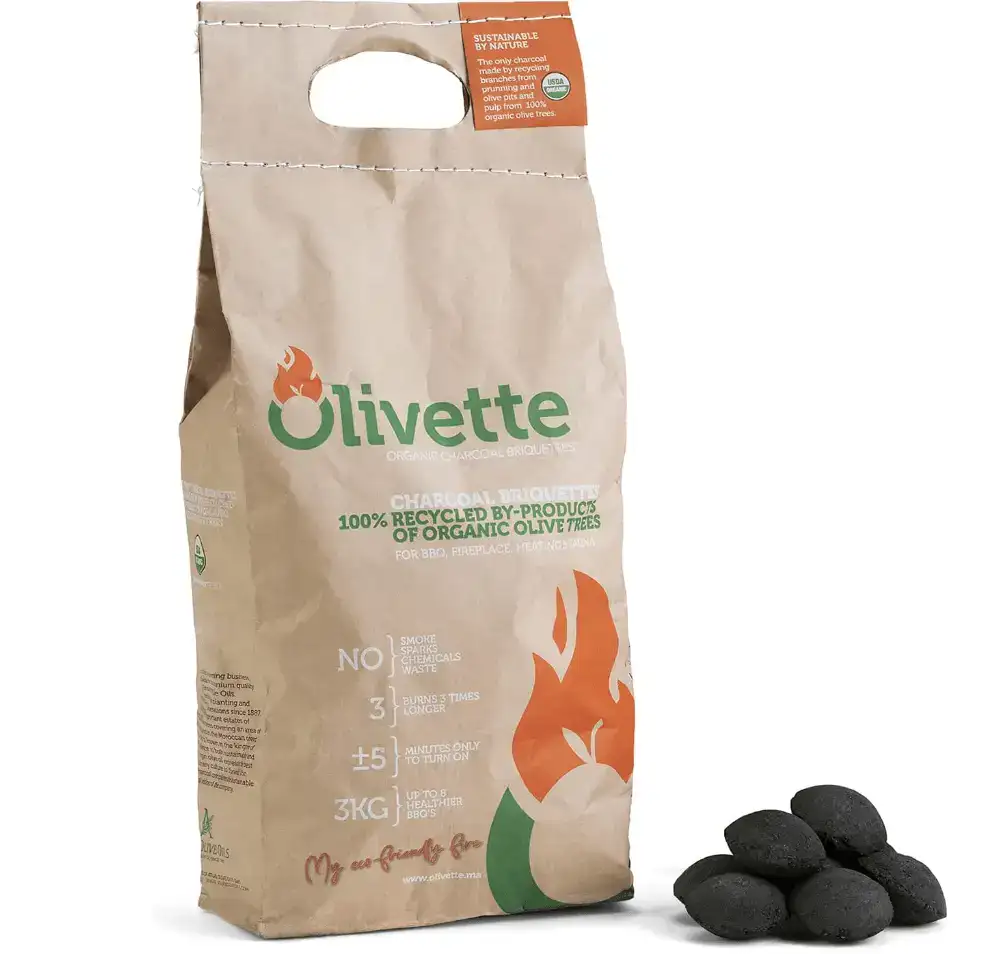Wondering which one to pick between smokeless coal vs smokeless wood?
The ideal fuel for your home can be difficult to choose because smokeless coal and wood have both been used for heating for quite some time now. In this piece, I will examine the benefits of both Smokeless Coal and Smokeless Wood to help you make that decision. Both of these have been used for as a heating source in the US for eons. While they come close in some aspects, there are others that makes it easy to see a clear winner.
Smokeless coal has the drawback of occasionally being more expensive than alternative heating fuels. But, if you are concerned about the environment or your health, this cost might be justified. Smokeless wood has some benefits over smokeless coal, such as being cleaner and releasing less pollution. One disadvantage of using smokeless wood is that it can be less efficient than smokeless coal.
What is Smokeless Coal?
Smokeless coal is a type of coal that does not produce any smoke when it’s burned. This makes it a viable option for facilities like factories and power plants where air quality is crucial. Additionally, compared to other types of coal, smokeless coal emits fewer emissions, making it environmentally benign.
A form of coal known as smokeless coal burns without emitting any emissions. This sort of coal is used in factories and power plants because it is more efficient than other coal varieties.
Burning natural gas or oil instead of combusting wood creates smokeless coal. This process results in cleaner coal with little to no ash or pollutants released into the atmosphere.

Related: Best Smokeless Fire Pits that’s Trending Now
What are the Benefits of Smokeless Coal?
1. No smoke
It often touts smokeless coal as the “cleaner” energy source option compared to smokeless wood. The major benefit of using smokeless coal is that it releases less smoke into the air than wood. This means fewer particulates and less air pollution.
Coal is cheaper, more efficient, and has a higher energy density than wood, meaning more heat can be produced with less fuel. It has a higher burning temperature than wood, so it increases the efficiency that you get from the heat it produces. All of these advantages make smokeless coal an attractive alternative to smokeless wood when it comes to creating a smokeless environment.
2. Reduced Air Pollution
It often touted smokeless coal as a more eco-friendly alternative to smokeless wood to reduce air pollution. Smokeless coal is composed of various types of fossil fuels that are burned without producing smoke. This is done by reducing the amount of oxygen injected into the coal during combustion, resulting in a clean burn with very low emission levels of pollutants and particulates.
Nevertheless, depending on the kind of wood and how it is burned, using smokeless wood can be difficult. With smokeless wood, the heat output is lower, and there is a greater risk of smoke being produced when burning. As a result, smokeless wood may not be as efficient as smokeless coal in lowering air pollution, even if it can be perceived as a more environmentally friendly option to traditional wood burning.
3. Smaller Environmental Impact
Smokeless coal is often considered the most environmentally friendly choice when compared to smokeless wood. This is because of its smaller environmental impact. Smokeless coal is a clean-burning fuel that produces less smoke and soot, which can lead to air pollution.
When compared to wood, it produces more heat for the same weight of fuel, making it more effective and using less coal to provide the same amount of heat. Smokeless coal also produces less waste material than wood burning, which means less clearing of hazardous and polluted-filled ashes.
4. Reduced Health Risks
Smokeless coal is significantly better for your health than smokeless wood. This is due to it releasing fewer toxins into the air when burned. The process of burning smokeless coal involves up to 20 times less gas and particulate matter than burning wood.
This greatly reduces the risk of air pollution and is healthier for everyone involved. Smokeless coal also doesn’t require a chimney to be present, meaning no soot or tar can escape into the atmosphere. The health risks associated with smokeless coal are significantly lower than smokeless wood, as it emits fewer known carcinogens.
Smokeless coal also emits fewer odors, making it a better alternative for those looking for an alternative heating solution. Smokeless coal is a far healthier and more beneficial solution than smokeless wood for reducing health risks.
5. Reduced Cost
Smokeless coal is a cost-effective solution to reduce heating costs. This fuel is cheaper than wood and can provide a lower-cost heating alternative to wood. Compared to wood, which has to be harvested, split, stacked, and dried before it can burn, smokeless coal is ready to use.
Smokeless coal also has a higher heat output per mass, allowing you to burn less of it for the same amount of heat. Additionally, smokeless coal is more durable than wood, making it a longer-lasting heating option that does not require as much maintenance or refueling. Finally, smokeless coal is easier to transport and store than wood, making it a more efficient and less costly solution for heating.
What is Smokeless Wood?
Smokeless wood (aka smokeless firewood/smoke-free wood), refers to specially processed or treated wood designed to produce minimal smoke when burned. It is used as a fuel source for fire pits, stoves, and fireplaces, providing a cleaner and more environmentally friendly alternative to traditional firewood.
The production of smokeless wood involves a careful drying and treatment process to reduce its moisture content significantly. The lower moisture content ensures that the wood burns more efficiently and produces less smoke. Smokeless wood is typically dried to a moisture level of around 20% or less, whereas regular firewood can have moisture levels of 30% or more.
What are the Benefits of Smokeless Wood?
When comparing smokeless wood with smokeless coal, both have their advantages, but there are specific benefits that smokeless wood offers:
1. Renewable Resource
Smokeless wood is sourced from renewable materials, such as sustainably managed forests, making it an eco-friendly option. It can be continually replenished through responsible forestry practices, reducing environmental impact.
2. Lower Carbon Emissions
Smokeless wood generally has lower carbon emissions compared to smokeless coal. When burned efficiently, it releases fewer greenhouse gases, contributing to reduced air pollution and a smaller carbon footprint.
3. Natural Aesthetics and Ambience
Burning smokeless wood in a fire pit or fireplace offers a traditional and natural ambiance. The crackling sounds and pleasant aroma of burning wood enhance the overall experience.
4. Ease of Use
Smokeless wood is typically easy to ignite and maintain, especially when using quality firewood with low moisture content. It provides a convenient and enjoyable fire experience without producing excessive smoke.
5. Cooking and Grilling
Smokeless wood can be an excellent option for cooking and grilling in a fire pit. It imparts a delicious smoky flavour to food, making it ideal for outdoor cooking enthusiasts.
6. Local Availability
In many states, smokeless wood is readily available, and it can be sourced locally, supporting local economies and reducing transportation-related emissions.
Source :(Wood Vs Coal on a Multifuel Stove, 2019)Coal Merchants
Smokeless Coal vs Smokeless Wood : The Ultimate Winner
All in all when comparing smokeless coal vs smokeless wood, I believe Smokeless coal is a much better alternative to smokeless wood from environmental, health and overall cost perspectives. Its cleaner energy solutions are beneficial both for the user and for the surrounding environment. So I suggest investing in smokeless coal, as it is safer and more efficient than other fuel sources. But if you like the wood burning feeling, Smokeless wood come in as a close contender for a smokeless firepit or grill.
Related: How Does A Perfect Smokeless Fire Pit Work
Reference: Wood vs Coal on a Multifuel Stove. (2019, January 24). YouTube. https://www.youtube.com/watch?v=_wqfwt_487c










